I'm reading indicator results all over the net (without fundamental analysis) and i'll post most of them.
There is no perfect way to test an indicator or system using historical data because past performance is no guarantee of future results.
However the markets are driven by human emotion and crowd psychology.
TEST PERIODS
Full Article Golden Cross - Which is the best? | ETF HQ
Exponential Moving Average (EMA)
Conclusion
Moving average crossovers have proven themselves to be a powerful and effective form of technical analysis, however the so called “Golden Cross” of the 50 and 200 day SMA is far from the best. Our testing revealed that the EMA produces better results than the SMA and the best settings are that of a 13 / 48.5 EMA Crossover. The long duration of the trades produced, ability to sidestep bear markets and the high probability of profit make it worth testing as a major component in a complete trading system.
Our Testing Strategy Explained There are endless combinations of moving averages that we could test in search of the best. To cast our testing range wide but intelligently we have used progressions of a ratio; slow/fast MA: Fast Moving Averages (FC) = 5, 10, 15, 20, 25, 30, 35, 40, 45, 50 Slow Moving Averages (SC) = 1.2 * FC, 1.4 * FC, 1.6 * FC, …….. 5.6 * FC, 5.8 * FC, 6 * FC So each of the ten FC settings were tested against twenty five SC settings based on a multiple of the FC. e.g The traditional Golden Cross with a SC of 50 and a FC of 200 has a multiple of 4 (because 50 * 4 = 200). The tests against a FC of 50 had a multiple as low as 1.2… (50 * 1.2 = 60) and as high as 6… (50 * 6 = 300).
The best returns came from an fast EMA of 10 days with a slow EMA of 50 (ratio of 5 because 10 * 5 = 50). Based on these results we will run more refined tests on fast moving averages in the range of 8 – 17 and slow moving averages 20 – 56.
There is a zone of dark green on the grid above but the very best from our tests, the True Golden Cross has a slow EMA of 48.5 and a fast EMA of 13. Reality is very different from the 50/200 SMA Golden Cross that someone made up once upon a time and that is why we must test everything.


 3Likes
3Likes LinkBack URL
LinkBack URL About LinkBacks
About LinkBacks

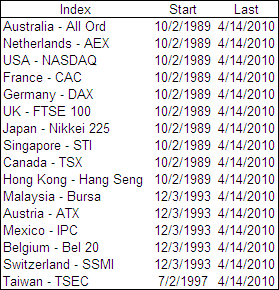
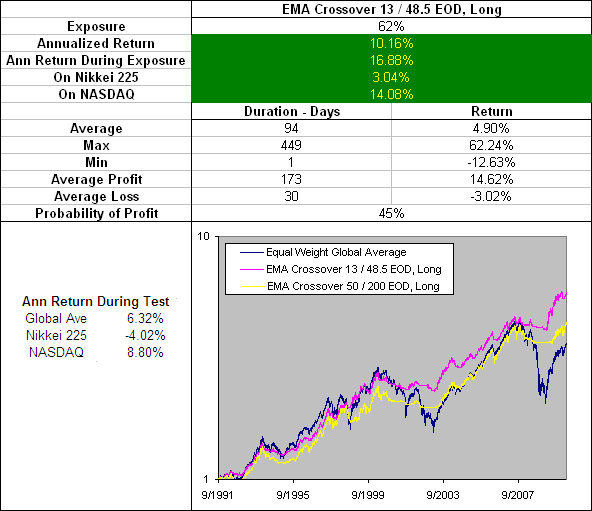
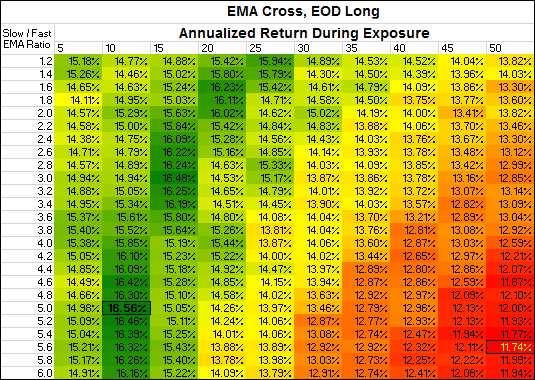
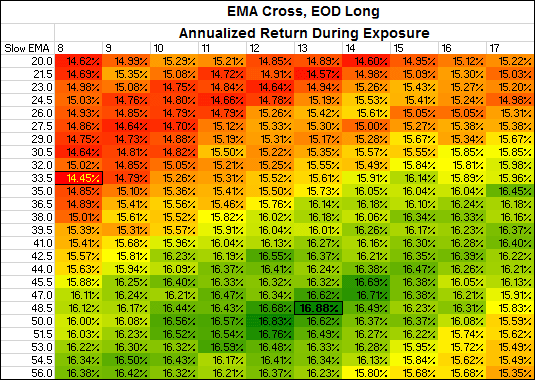





 Reply With Quote
Reply With Quote




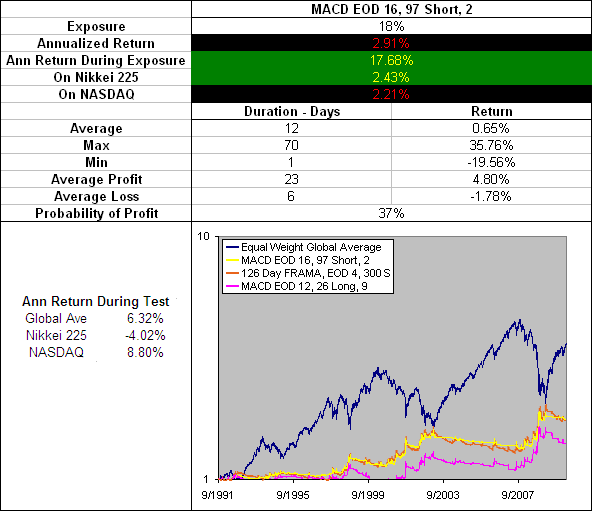
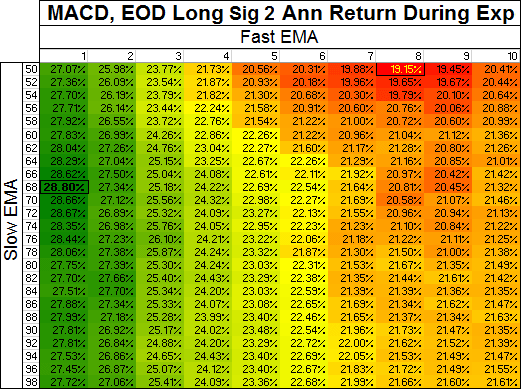
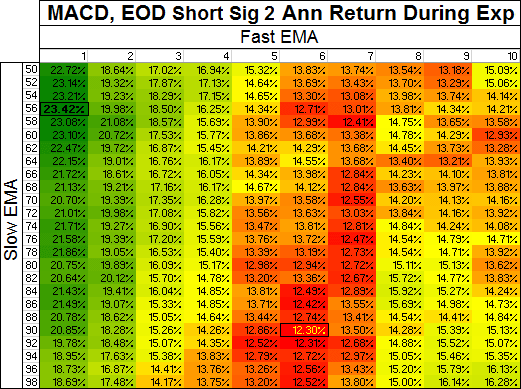
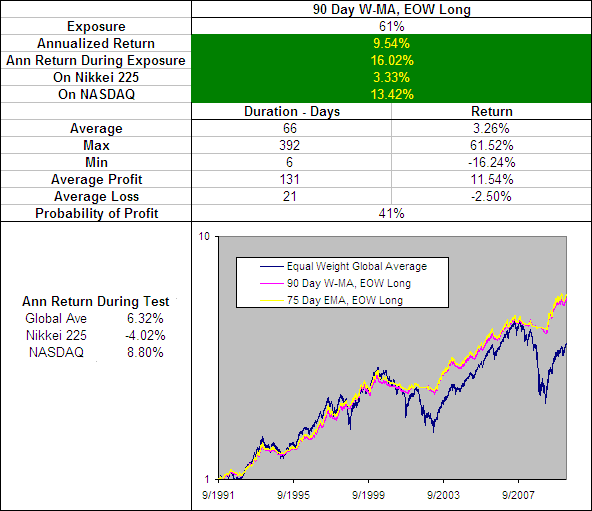
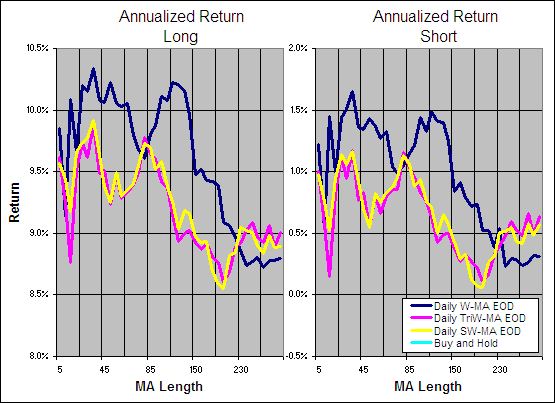
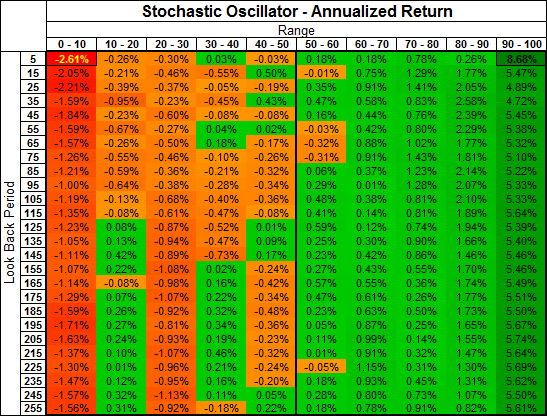

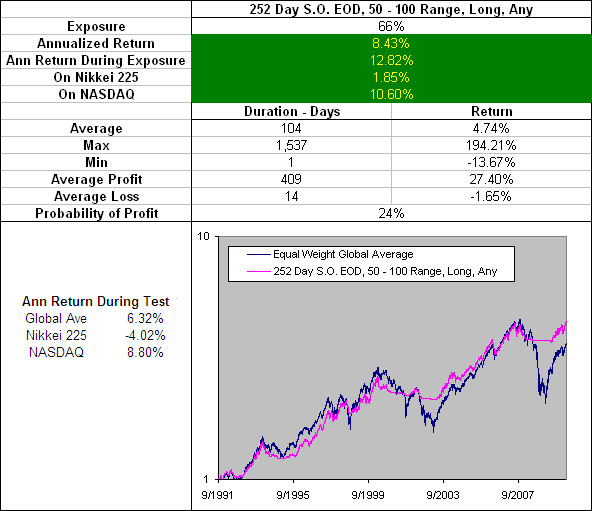

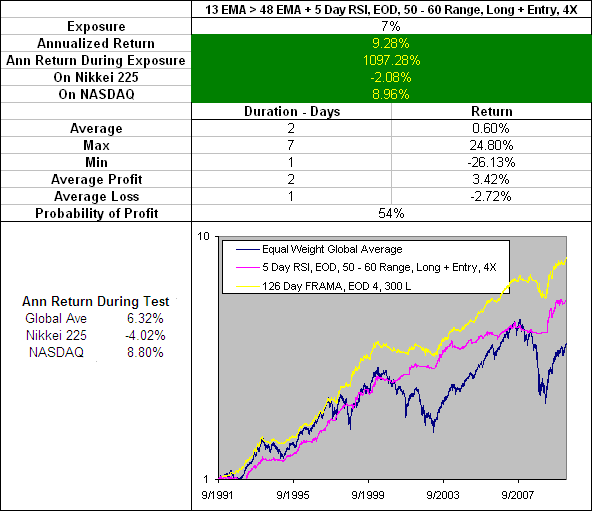
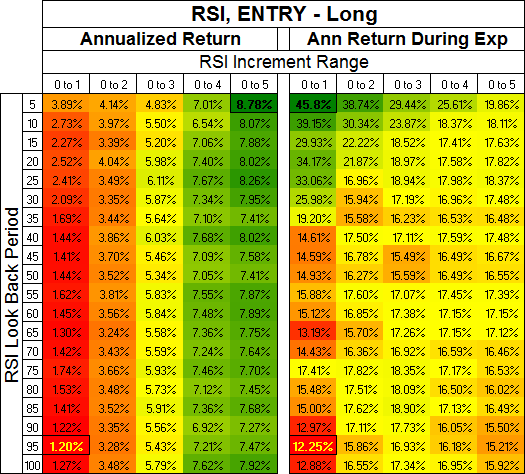
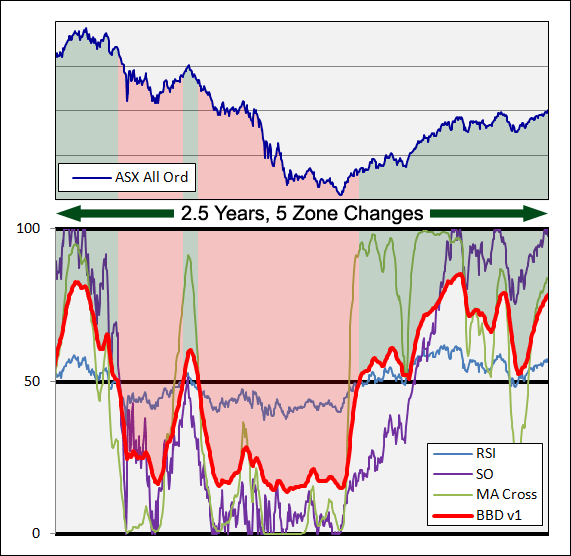
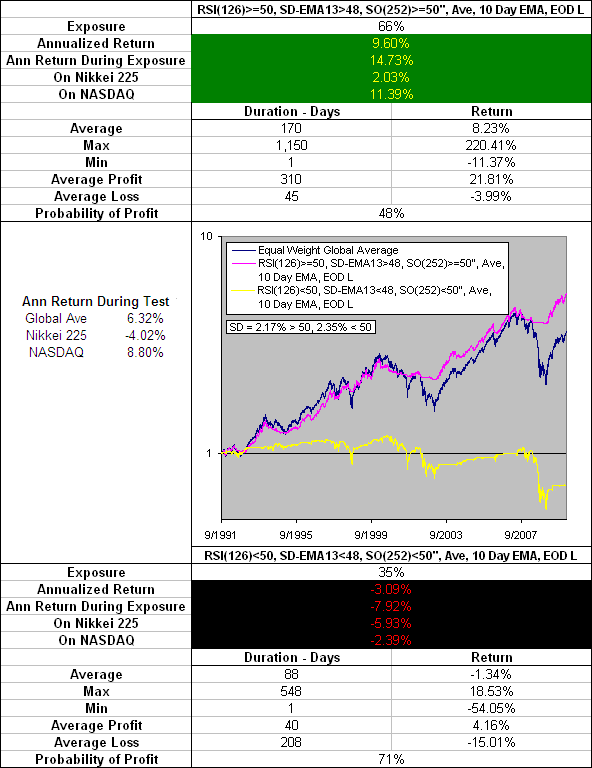
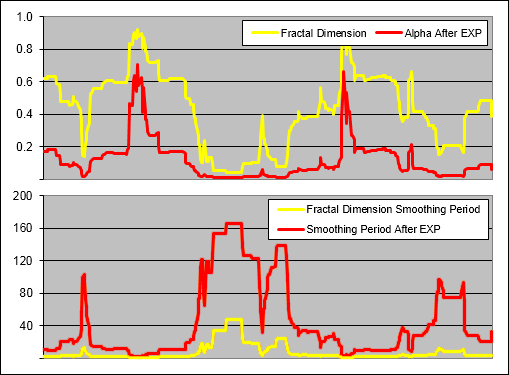


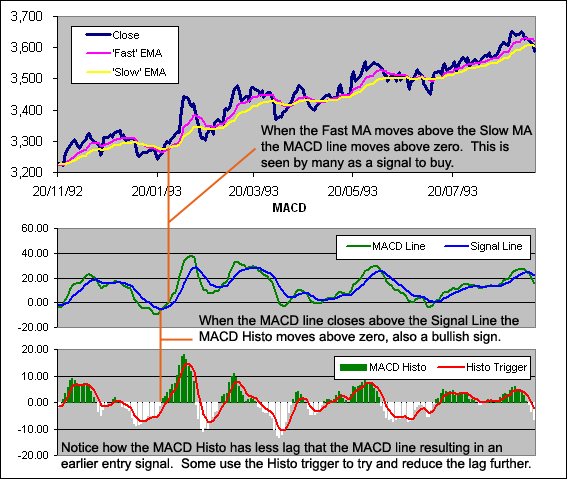


Bookmarks